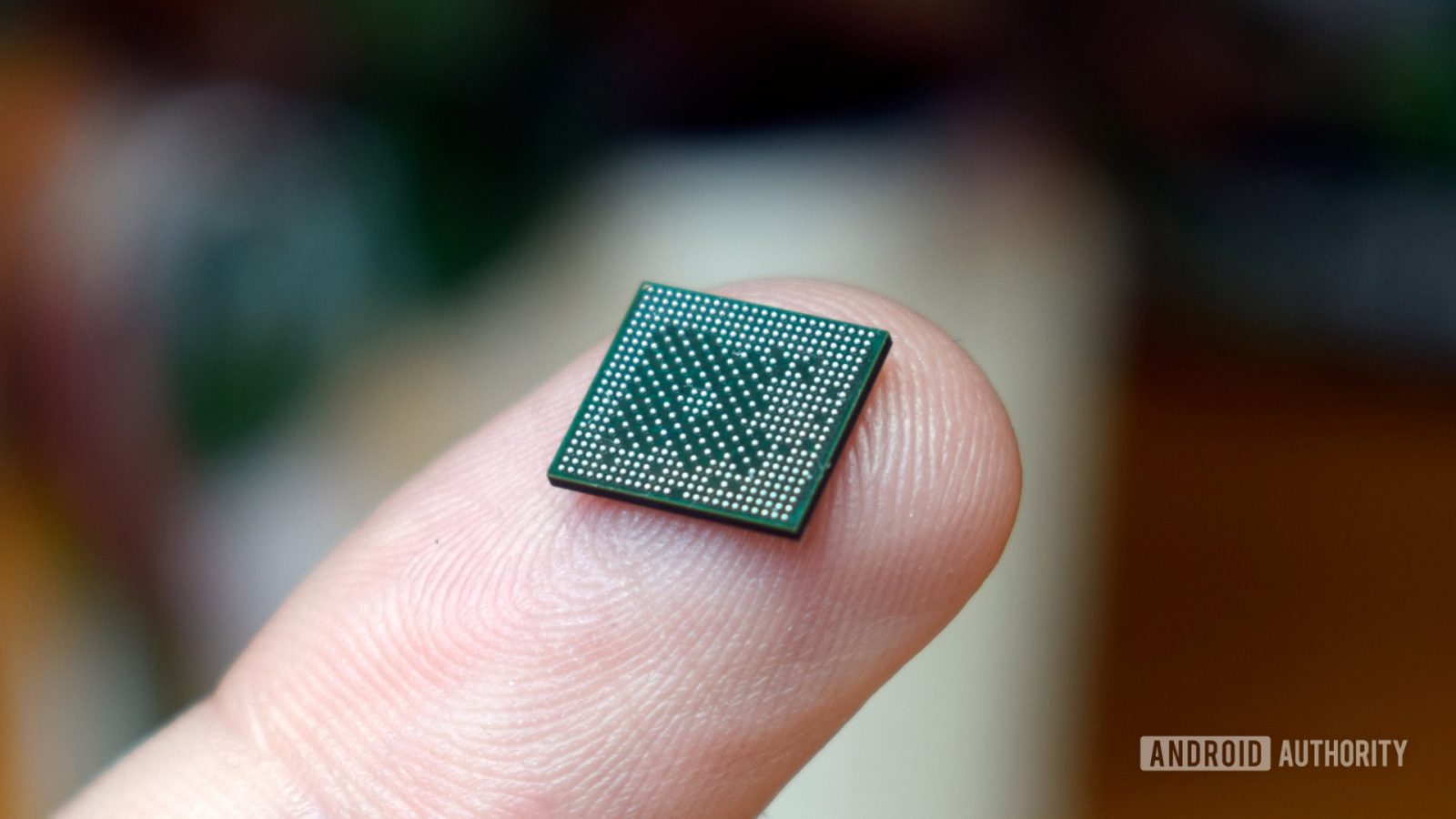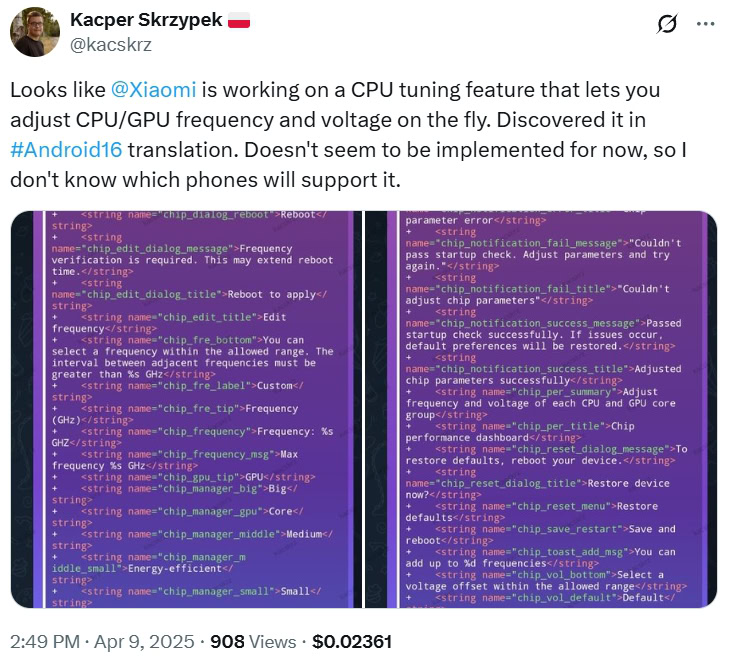

Robert Triggs / Android Authority
TL;DR
- Strings found in MIUI firmware suggest Xiaomi is developing a ‘Chip performance dashboard’ feature.
- This dashboard would allow users to adjust CPU and GPU frequencies and voltages within safe parameters.
- Changes would require a reboot and will undergo system checks to ensure that the phone works well enough.
Most Android flagships these days come with overkill processors, and frankly, most of us don’t need that much processing power for our everyday tasks. SoCs inside the phones can dynamically adjust their performance based on various parameters, but outside of gaming modes offered on some phones, there’s no way for a user to dictate just how much processing power is available to them. That could soon change, as an Android OEM is working on giving power users the ability to adjust CPU and GPU frequency and more on the fly!
Leaker Kacper Skrzypek spotted strings within MIUI that suggest that Xiaomi is working on a CPU tuning feature.

This feature could let Xiaomi smartphone users adjust the CPU and GPU frequency on their phones and even make voltage adjustments if they know what they are doing.
Some of the strings are reproduced below:
Code
Chip performance dashboard Welcome to Chip performance dashboard Adjust frequency and voltage of each CPU and GPU core group Default preferences were restored to ensure normal use. Passed startup check successfully. If issues occur, default preferences will be restored. Adjusted chip parameters successfully Couldn't pass startup check. Adjust parameters and try again. Frequency verification is required. This may extend reboot time. Reboot to apply You can select a frequency within the allowed range. The interval between adjacent frequencies must be greater than %s GHz Select a voltage offset within the allowed range According to the strings, the feature could be called a “Chip performance dashboard.” Users will be able to select a frequency for their CPU and GPU cores within the allowed range. Strings relate to big, medium, small, and GPU cores, indicating that users could have a lot of control.
Since messing around with SoC frequency can destabilize the phone, Xiaomi seems to have built a protection mechanism. Changes appear to require a reboot to apply, and there’s a “frequency verification” to ensure things are working well. If the phone doesn’t pass through the “startup check,” the system will restore default preferences.
These strings were discovered in Android 16 firmware, so one can presume that to be a baseline for implementation. The feature hasn’t been implemented yet on any Xiaomi device, and there’s no word on which phones will support it either. But if your Xiaomi phone isn’t getting Android 16, there’s a good chance it may not be eligible for this feature. Speculatively, I wouldn’t be surprised if Xiaomi restricts the feature to flagships, as the feature would feel right at home on the Xiaomi 15 and Xiaomi 15 Ultra.
Most users don’t need to mess with their Android devices’ CPU and GPU frequency settings. Such tweaking was very popular during the glory days of Android custom ROMs and kernels, but phones are optimized well enough these days.
Still, choice is the essence of Android, and giving power users the choice to underclock or perhaps even overclock their smartphones would certainly be appreciated by those who don’t want to risk losing SafetyNet access for such mods. Xiaomi has also heavily restricted bootloader unlocking in recent years, so baking such mods right into the OS also removes some of the need for unlocking the bootloader and installing a custom kernel.
Would you like more control over your smartphone’s CPU and GPU tuning? Why would you underclock or overclock your smartphone? Let us know in the comments below!
Got a tip? Talk to us! Email our staff at [email protected]. You can stay anonymous or get credit for the info, it’s your choice.
What’s your reaction?
Love0
Sad0
Happy0
Sleepy0
Angry0
Dead0
Wink0







![what-google-messages-features-are-rolling-out-[april-2025]](https://betadroid.in/wp-content/uploads/2025/04/15058-what-google-messages-features-are-rolling-out-april-2025-370x250.png)

Leave a Reply
View Comments